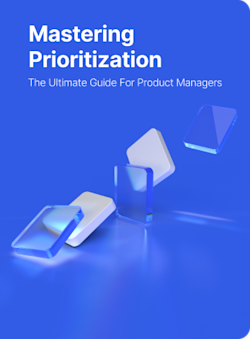Feature Adoption
What is feature adoption?
Feature adoption definition
Feature adoption is a metric we use to check how many product users use specific features. For example, airfocus would use the feature adoption metric to check how many of our users are using airfocus Portal.
Why is feature adoption important for product managers?
Adding new features is a great way to improve your product's value to its users. It attracts new customers and can help restore interest in your product for users who have stopped using it. This is especially important with SaaS companies that rely on customer subscriptions and continued interest in their products. Low feature adoption means customers are paying for things they’re not using, a common cause of subscription cancellations.
Feature adoption can be a more valuable metric than monthly users or downloads. It can tell you how many people are actually using your product rather than those who have only signed up or downloaded it. It also tells us what features the product has that the customers don’t care about.
As you can imagine, the feature adoption metric is vital when introducing new features. It clearly shows us how many customers are interested in the new feature, and tracking the metric over time will help us identify if customers are getting the intended value out of it.
How to measure feature adoption
Feature adoption is one of the easier metrics to work out, depending on how you measure it. The simplest way is to work out the feature adoption rate. This number represents the percentage of active users who used the feature at least once during the given time period. To calculate the feature adoption rate for a single month, you would divide the Monthly Active Users (MAU) of a feature for that month by the total number of users your product had at the end of the time period. You can also create targets for feature adoption by comparing it to competitor products with a similar feature.
Factors that affect feature adoption by users
Almost everything about your product can affect feature adoption rates, including factors that may not be explicitly related to the feature you’re looking to measure. Factors include (but are not limited to):
User onboarding
If the feature meets users' needs
Cost
Availability of support
Tips for successful feature adoption
New features rarely become popular on their own. You need to actively promote it and make sure customers use it and have good experiences. Here are some tips to help increase your feature adoption rate.
Engage users
It’s crucial to talk to your customers before and after releasing a new feature. In the run-up, you can gather key needs and wants from users to help you identify what you need to include. This engagement will also increase brand loyalty and possibly trigger more word-of-mouth marketing.
Announce features
No one will use a feature they don’t know about. Avoid “stealth launches” and put some serious marketing effort into your new features. The more excited customers are before the launch, the more likely they will adopt the feature.
Increase the value of the feature
If your feature adoption rate is looking a little low, try to identify ways to increase its value to the customer. Maybe the feature runs a little slowly, or it’s missing that little something. Talking with users will help with this.
Collect feedback
We need users to continue letting us know how their experience is going. Needs change over time, and features may need a little refresh every now and then, but you won’t know without collecting regular feedback.
Analyse feature adoption metrics
Continuously monitoring feature adoption metrics helps you keep on top of your product. If a feature performs worse than usual, it may be an early warning sign of a problem that needs to be addressed.
General FAQ

Glossary categories
Prioritize with confidence

Experience the new way of doing product management








